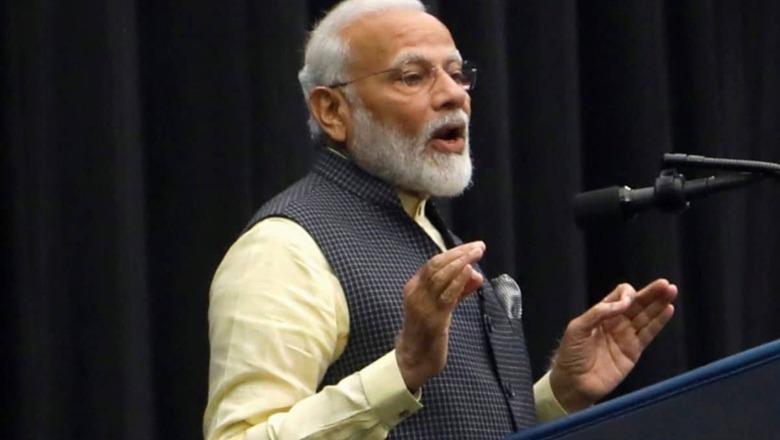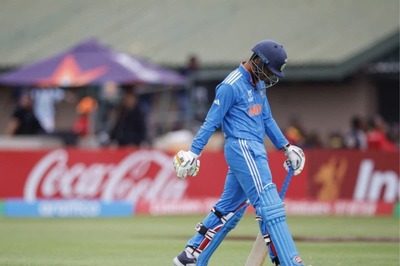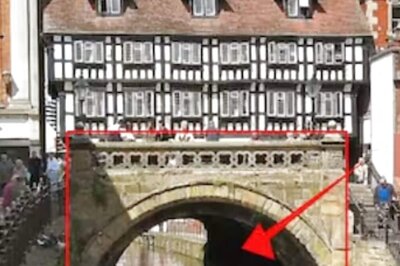
views
June 25 is the 48th anniversary of the Emergency. It still remains the darkest chapter in India’s democratic history. On the night of June 25-26, the then Prime Minister Indira Gandhi had imposed national emergency curtailing fundamental rights, putting the Opposition in jail and censoring the media. She subverted the Constitution and there wasn’t even a whimper of protest within the Congress party. And it was the Rashtriya Swayamsevak Sangh (RSS) which led from the front to challenge her might to protect Indian democracy and Indian Constitution.
Anywhere between 1 to 1.5 lakh RSS volunteers were arrested, most of them spending almost a year and a half in jail in inhuman conditions. At Least 87 RSS volunteers lost their lives. While the Indian media was crawling when asked to bend by Congress and Indira’s dictatorial regime during that era, the foreign press reported extensively on the underground movement against Emergency and they were unanimous on one particular aspect that had RSS not been there, the Indian democracy couldn’t have been protected.
While the older generation still remembers the horrors of Emergency, the younger generation, especially the millennials, hardly know or talk about it without realising that the anti-Congress mood in the nation today which is shaping contemporary Indian politics today has an origin in those dark days of Emergency. To reignite the interest of our readers and especially those who don’t know much about the Emergency, here is a brief anecdotal history of the Indian democracy’s darkest phase.
Famous Obituary
Three days after the Emergency was imposed and newspapers were censored, an obituary appeared in the classified section of Times of India. It was written and placed in the newspaper by Ashok Mahadevan, a 26-year-old Mumbai based journalist who was working with Reader’s Digest in India at that time. It seemed so innocuous that the officer deputed to censor the newspaper let it go but it became talk of the town and a huge embarrassment for the Indira government. This 22-word obituary will go down into the annals of history as one of the smartest and the sharpest attacks on Emergency by an Indian journalist. Here is how that obituary read: “O’Cracy, D.E.M., beloved husband of T. Ruth, loving father of L.I. Bertie, brother of Faith, Hope and Justicia, expired on June 26.”
Motherland and Malkani
KR Malkani, editor of Motherland, a daily English newspaper, was the first person to be arrested under Emergency from his Delhi residence at Pandara Road at around 2.30 am on 26 June. The power supply to Motherland’s office was cut on the midnight of 25-26 June. But by some stroke of luck the power was restored in its office around noon and whatever editorial staff was left there published a special edition exposing the draconian step of imposing Emergency by Indira Gandhi in detail. No other newspaper on the morning of June 26 had carried any coverage of the Emergency except a small brief item in The Hindustan Times.
Motherland, however, was able to bring out a special supplement by the 26 June afternoon that exposed Indira Gandhi’s move to impose Emergency in detail. This was a historic edition and was in such huge demand that a single copy was sold at Rs 20, a princely sum for a newspaper copy at that time. It was the only newspaper on 26 June that published detailed stories on Emergency and made the whole nation and the world aware about it. Malkani spent more than 18 months in jail and later wrote a fascinating first-hand account of the saga of Emergency under the title The Midnight Knock.
Narendra Modi and Emergency
Prime Minister Narendra Modi was an RSS Pracharak (full-time worker) in Gujarat when Emergency was imposed. He remained underground, evaded arrest and played an important role in establishing Gujarat as the main publication centre of underground literature that was distributed through other states. Modi also wrote his first book, Sangharhma Gujarat, giving first-hand account of the movement. One of the episodes is about his clandestine meeting with firebrand socialist leader George Fernandes who was one of the key targets of the Indira government.
Describing his dramatic meeting with Fernandes, who was a key leader of the underground movement at that time, Modi writes: “A yellow Fiat car stopped near the door. A person came out of it. He had a huge physique, was wearing a wrinkled kurta, had a green bandana on the head, a printed tahmat and a watch with a golden chain on the wrist. He was dressed as a Muslim mystic with a heavy beard on his face, and was called ‘Baba’.”
“With this Fernandes came in. In those days it was also a joyous occasion to meet the colleagues associated with the struggle. We hugged each other and we congratulated each other for carrying forward the struggle with persistence. I shared with him the information about Gujarat and other provinces that was available with me.”
After this, Modi further noted, “I was in constant touch with Mr. George, I also got him to meet Nanaji (RSS’ senior pracharak Shri Nanaji Deshmukh).”
Nanaji was a key leader of the movement against the Emergency. He was the secretary of Lok Sangharsh Samiti, a joint forum of all those who were opposing the Emergency.
At the time, the government was trying to desperately find both Fernandes and Nanaji.
Modi describes the earlier days of agitation: “The Sangh office used to be the abode for us pracharaks. On July 4, the Sangh was banned and its offices were occupied by the government. Therefore, both me and the Sangh’s Prant (provincial) pracharak, Shri Keshavrao Deshmukh, used to stay with Shri Vasantbhai Gajendragadkar (a senior functionary).”
The foreword of the book has been written by Dattopant Thengadi, an RSS stalwart and ideologue. Modi has written about a page and a half talking about the book at the end in Appendix 4 where he says, “This is my first book. I have penned this book not as an author, but as a soldier of war, as a key to some difficult questions about the underground struggle that have remained unanswered so far.”
Foreign Press on Emergency
The Economist wrote on 24 January 1976, in an article titled Yes there is an Underground, “In formal terms, the underground is an alliance of four opposition parties: The Jana Sangh (the RSS’ political wing), the socialist party, the breakaway fraction of the Congress party and the Lok Dal.
But the shock troops of the movement come largely from the Jana Sangh and …RSS, which claim a combined membership of 10m (of whom 80,000, including 6,000 full-time party workers, are in prison).”
In another dispatch (reproduced in the underground journal Satyavani on 26 June 1977), The Economist wrote: “The underground campaign against Mrs Gandhi claims to be the only non-left wing revolutionary force in the world, disavowing both bloodshed and class struggle. Indeed, it might even be called right-wing since it is dominated by Jana Sangh and its banned cultural affiliate the RSS but its platform at the moment has only one non-ideological plank — to bring back democracy to India.”
It added, “The truth of this operation consists of tens of thousands of cadres who are organised down to the village level into 4-man cells. Most of them are RSS regulars… the other opposition parties which started out as partners in the underground have effectively abandoned the field to the Jana Sangh and the RSS. The function of the RSS cadre network… is mainly to spread the anti-Gandhi word. Once the ground is prepared and political consciousness raised, so the leaders are ready, any spark can set off the revolutionary Prairie fire.”
The Guardian quoted an Indira government’s minister in an article dated 2 August 1976, titled The Empress Reigns Supreme, “The RSS continues to be active all over India, Brahmanand Reddy, the Indian Home Minister, said recently. It has even extended its tentacles to far-off Kerala in the South.”
Commenting on the role of Communists, the same article said, “Pro-CPI (Communist Party of India) journals in India are being given some latitude by the censors because the party is in favour of even stronger measures to suppress the non-communist opposition.”
The New York Times reported on 28 October, 1976, “The only political parties which are supporting Congress Party of the government in the actions that it is taking are the Communist Party of India, the pro-Moscow Communist party and the Moslem League.”
The writer, an author and columnist has written several books. He tweets @ArunAnandLive. The views expressed in this article are those of the author and do not represent the stand of this publication.




















Comments
0 comment